The Albert N'Yanza, Great Basin of the Nile by Samuel White Baker (love story novels in english .txt) 📕
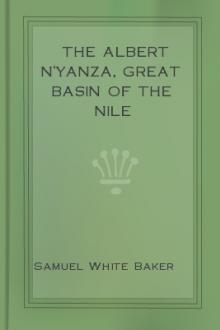
- Author: Samuel White Baker
- Performer: -
Book online «The Albert N'Yanza, Great Basin of the Nile by Samuel White Baker (love story novels in english .txt) 📕». Author Samuel White Baker
Akkara tribe of the Chol are true Gallas, and that the Latookas may be
derived from a similar origin by settlements after conquest.
The great chief of the Latookas, “Moy,” assured me that his people could
not withstand the cavalry of the Akkara, although they were superior to
all other tribes on foot.
I have heard the traders of Khartoum pretend that they can distinguish
the tribes of the White Nile by their individual type. I must confess my
inability on this point. In vain I have attempted to trace an actual
difference. To me the only distinguishing mark between the tribes
bordering the White River is a peculiarity in either dressing the hair,
or in ornament. The difference of general appearance caused by a variety
of hairdressing is most perplexing, and is apt to mislead a traveller
who is only a superficial observer; but from the commencement of the
negro tribes in N. lat. 12 degrees to Ellyria in lat. 4 degrees 30
minutes I have found no specific difference in the people. The actual
change takes place suddenly on arrival in Latooka, and this is accounted
for by an admixture with the Gallas.
The Latookas are a fine, frank, and warlike race. Far from being the
morose set of savages that I had hitherto seen, they were excessively
merry, and always ready for either a laugh or a fight. The town of
Tarrangolle contained about three thousand houses, and was not only
surrounded by ironwood palisades, but every house was individually
fortified by a little stockaded courtyard. The cattle were kept in large
kraals in various parts of the town, and were most carefully attended
to, fires being lit every night to protect them from flies; and high
platforms, in three tiers, were erected in many places, upon which
sentinels watched both day and night to give the alarm in case of
danger. The cattle are the wealth of the country, and so rich are the
Latookas in oxen, that ten or twelve thousand head are housed in every
large town; thus the natives are ever on the watch, fearing the attacks
of the adjacent tribes.
The houses of the Latookas are generally bell-shaped, while others are
precisely like huge candle-extinguishers, about twenty-five feet high.
The roofs are neatly thatched, at an angle of about 75 degrees, resting
upon a circular wall about four feet high; thus the roof forms a cap
descending to within two feet and a half of the ground. The doorway is
only two feet and two inches high, thus an entrance must be effected
upon all-fours. The interior is remarkably clean, but dark, as the
architects have no idea of windows. It is a curious fact that the
circular form of but is the only style of architecture adopted among all
the tribes of Central Africa, and also among the Arabs of Upper Egypt;
and that, although these differ more or less in the form of the roof, no
tribe has ever yet sufficiently advanced to construct a window. The town
of Tarrangolle is arranged with several entrances, in the shape of low
archways through the palisades; these are closed at night by large
branches of the hooked thorn of the kittur bush (a species of mimosa).
The main street is broad, but all others are studiously arranged to
admit of only one cow, in single file, between high stockades; thus, in
the event of an attack, these narrow passages could be easily defended,
and it would be impossible to drive off their vast herds of cattle
unless by the main street. The large cattle kraals are accordingly
arranged in various quarters in connexion with the great road, and the
entrance of each kraal is a small archway in the strong ironwood fence
sufficiently wide to admit one ox at a time.
Suspended from the arch is a bell, formed of the shell of the Dolape
palm-nut, against which every animal must strike either its horns or
back, on entrance.
Every tinkle of the bell announces the passage of an ox into the kraal,
and they are thus counted every evening when brought home from pasture.
I had noticed, during the march from Latome, that the vicinity of every
town was announced by heaps of human remains. Bones and skulls formed a
Golgotha within a quarter of a mile of every village. Some of these were
in earthenware pots, generally broken; others lay strewn here and there;
while a heap in the centre showed that some form had originally been
observed in their disposition. This was explained by an extraordinary
custom most rigidly observed by the Latookas. Should a man be killed in
battle the body is allowed to remain where it fell, and is devoured by
the vultures and hyenas; but should he die a natural death, he or she is
buried in a shallow grave within a few feet of his own door, in the
little courtyard that surrounds each dwelling. Funeral dances are then
kept up in memory of the dead for several weeks; at the expiration of
which time, the body being sufficiently decomposed, is exhumed. The
bones are cleaned, and are deposited in an earthenware jar, and carried
to a spot near the town which is regarded as the cemetery. I observed
that they were not particular in regarding the spot as sacred, as signs
of nuisances were present even upon the bones, that in civilized
countries would have been regarded as an insult.
There is little difficulty in describing the toilette of the native—
that of the men being simplified by the sole covering of the head, the
body being entirely nude. It is curious to observe among these wild
savages the consummate vanity displayed in their headdresses. Every
tribe has a distinct and unchanging fashion for dressing the hair; and
so elaborate is the coiffure that hairdressing is reduced to a science.
European ladies would be startled at the fact, that to perfect the
coiffure of a man requires a period of from eight to ten years! However
tedious the operation, the result is extraordinary. The Latookas wear
most exquisite helmets, all of which are formed of their own hair; and
are, of course, fixtures. At first sight it appears incredible, but a
minute examination shows the wonderful perseverance of years in
producing what must be highly inconvenient. The thick, crisp wool is
woven with fine twine, formed from the bark of a tree, until it presents
a thick network of felt. As the hair grows through this matted substance
it is subjected to the same process, until, in the course of years, a
compact substance is formed like a strong felt, about an inch and a half
thick, that has been trained into the shape of a helmet. A strong rim,
of about two inches deep, is formed by sewing it together with thread;
and the front part of the helmet is protected by a piece of polished
copper; while a piece of the same metal, shaped like the half of a
bishop’s mitre and about a foot in length, forms the crest. The
framework of the helmet being at length completed, it must be perfected
by an arrangement of beads, should the owner of the head be sufficiently
rich to indulge in the coveted distinction. The beads most in fashion
are the red and the blue porcelain, about the size of small peas. These
are sewn on the surface of the felt, and so beautifully arranged in
sections of blue and red that the entire helmet appears to be formed of
beads; and the handsome crest of polished copper, surmounted by
ostrich-plumes, gives a most dignified and martial appearance to this
elaborate headdress. No helmet is supposed to be complete without a row
of cowrie-shells stitched around the rim so as to form a solid edge.
The Latookas have neither bows nor arrows, their weapons consisting of
the lance, a powerful iron-headed mace, a long-bladed knife or sword,
and an ugly iron bracelet, armed with knife-blades about four inches
long by half an inch broad: the latter is used to strike with if
disarmed, and to tear with when wrestling with an enemy. Their shields
are either of buffaloes’ hide or of giraffes’, the latter being highly
prized as excessively tough although light, and thus combining the two
requisite qualities of a good shield; they are usually about four feet
six inches long by two feet wide, and are the largest I have seen.
Altogether, everything in Latooka looks like fighting. Although the men
devote so much attention to their headdress, the women are extremely
simple. It is a curious fact, that while the men are remarkably
handsome, the women are exceedingly plain;—they are immense creatures,
few being under five feet seven in height, with prodigious limbs. Their
superior strength to that of other tribes may be seen in the size of
their water jars, which are nearly double as large as any I have seen
elsewhere, containing about ten gallons; in these they fetch water from
the stream about a mile distant from the town. They wear exceedingly
long tails, precisely like those of horses, but made of fine twine and
rubbed with red ochre and grease. They are very convenient when they
creep into their huts on bands and knees. In addition to the tails, they
wear a large flap of tanned leather in front. Should I ever visit that
country again, I should take a great number of “Freemasons’” aprons for
the women; these would be highly prized, and would create a perfect
FUROR. The only really pretty women that I saw in Latooka were Bokke,
the wife of the chief, and her daughter; they were fac-similes of each
other, the latter having the advantage of being the second edition. Both
women and men were extremely eager for beads of all kinds, the most
valuable being the red and blue porcelain for helmets, and the large
opalescent bead, the size of a child’s marble.
The day after my arrival in Latooka I was accommodated by the chief with
a hut in a neat courtyard, beautifully clean and cemented with clay,
ashes, and cowdung. Not patronising the architectural advantages of a
doorway of two feet high, I pitched my large tent in the yard and stowed
all my baggage in the hut. All being arranged, I had a large Persian
carpet spread upon the ground, and received the chief of Latooka in
state. He was introduced by Ibrahim, and I had the advantage of his
interpreter.
I commenced the conversation by ordering a present to be laid on the
carpet of several necklaces of valuable beads, copper bars, and coloured
cotton handkerchief. It was most amusing to witness his delight at a
string of fifty little “berrets” (opal beads the size of marbles) which
I had brought into the country for the first time, and were accordingly
extremely valuable. No sooner had he surveyed them with undisguised
delight than he requested me to give him another string of opals for his
wife, or she would be in a bad humour;—accordingly a present for the
lady was added to the already large pile of beads that lay heaped upon
the carpet before him. After surveying his treasures with pride, he
heaved a deep sigh, and turning to the interpreter he said, “What a row
there will be in the family when my other wives see Bokke (his head
wife) dressed up with this finery. Tell the `Mattat’ that unless he
gives necklaces for each of my other wives, they will fight!”
Accordingly I asked him the number of ladies that made him anxious. He
deliberately began to count upon his fingers, and having exhausted the
digits of one hand, I compromised immediately, begging him not to go
through the whole of his establishment, and presented him with
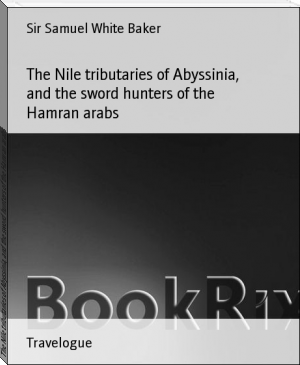

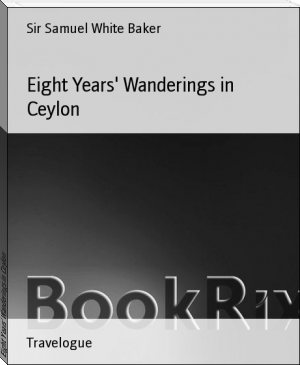
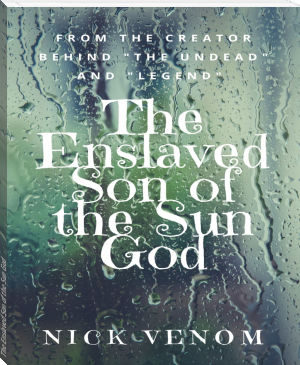
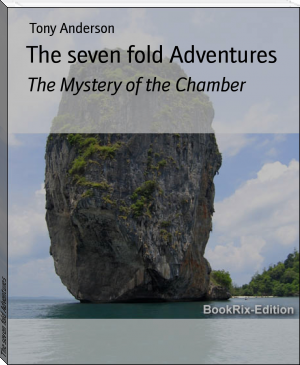
Comments (0)